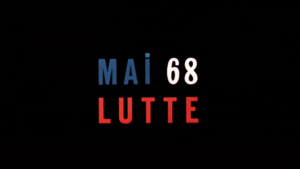I used to imagine composite mediums when I was a teenager, when I was an unashamed daydreamer. One of these was a book with notes to inform the reader with the exact intonation and melody to read the dialogues. So it would be a text but with a superimposed notation, that can include musical notation as well, such that reading would be both reading the text and singing the melody. I know music notation generally include text, such as lyrics. But in my imagination I had another type of object, a strange beast so to speak. Another came from a dream in which photographs were also at the same time songs. These two mediums were not brought together in a constructive way, instead, photographs and songs were one and the same thing. So you would hear the song as you approach the photograph and it would fade away as the image gets smaller and the details are blurred.
Now imagine you are a documentary filmmaker and you want to compose a book in which you can put many videos and also tag them so they are linked and clustered, instead of being stored in a folder structure. Now this book would also have texts but these texts do not have to be read from the front to back, there is no flipping of pages. There is no beginning or end, or a hierarchical structure to these texts. If your aim were to bring together a certain number of videos and other types of documents together, there are many tools for storing and presenting such a collection. More often than not, still, these new mixed media or new cyber spaces follows the example of the book and the physical library. (This is not to say that this is a bad thing. On the other hand, from scrolls to minuature manuscripts, what we call book has not been a monolithic form either.)
Filming Revolution is a such a new composite object that first embarked me on a meditation on books and mixed media. It is a book/website on the filmmaking practices in Egypt in the aftermath of January 25 revolution in 2011, which defies the forms of book, documentary, archive. This is an impressive project that is very difficult to describe and one needs to explore and experience oneself. A product of fresh imagination and exploration, Alisa Lebow, a scholar and filmmaker, just recently launched her project on videographers and filmmakers of Egypt and their practices. I am still exploring this website/book and I’m still quite mesmerized by the scope and form of it. My first point of experience has been with the novelty this project brings to the book format perhaps because I worked at a publishing house and learned about the process through which a manuscript becomes a print book.
Lebow went to Egypt and interviewed many videographers and activists. Lebow created an interactive documentary book that provides a great resource on the process and progress of engaged film-making in Egypt in the aftermath of Jan. 25 Revolution. As she explains in her introductory piece on the publisher’s website, Lebow made the first trip to Egypt for this project in 2013, and then the following year. Her meta-documentary includes these interviews in video format, a number of texts that present her reflections on the process, some clarifications and inside stories as well with links to videos. Lebow also provides samples for the (finished or in-progress) works that are mentioned in the interviews, which is what she wanted this project to be able to provide to the reader.
The website is not difficult to explore but to be frank, it is a little intimidaring at first but upon entering the website it provides a very short and simple guide on how to explore and navigate the site. It uses both textual and hyper-textual tools to link these documents and in this way invites the reader/viewer to make his/her discoveries. These discoveries are made in the same way one surfs on the internet, from one site to another, through links. But the website allows one to record these discovery-trajectories as “pathways” and save it on the website for the others, if one wishes to do so. It is like leaving back the record of one’s movement in a new city as a flaneur, for others to repeat, hence increasing the ways one discovers on this website.
Going back to my initial meditation, and as an unconclusive conclusion, I think that this website/book dismantles the conventions of the book that has been solidified in scholarly writing and publishing, despite the presence of few adventureous spirits, in the Anglo-Saxon world. But here, the order of reading and viewing is completely based on the interests of the viewer/reader. Yet for those who are not familiar with the actors and topics of revolutionary film-making in Egypt, it takes an extra effort to reach a general picture of the scene and its themes. So the initial intimidation is not compensated with a sense of achieved command or mastery on the themes of the project, on the risks and difficulties in film-making and how people chose to tackle with them, as it is expected to be as one comes closer to the end of a book. In short, the novel form of this book demands a bold mode of engagement with it. What I wonder is at what point, or if, the engagement with the form of this novel form of book recedes and leaves its place to an increasing engagement with the content.

